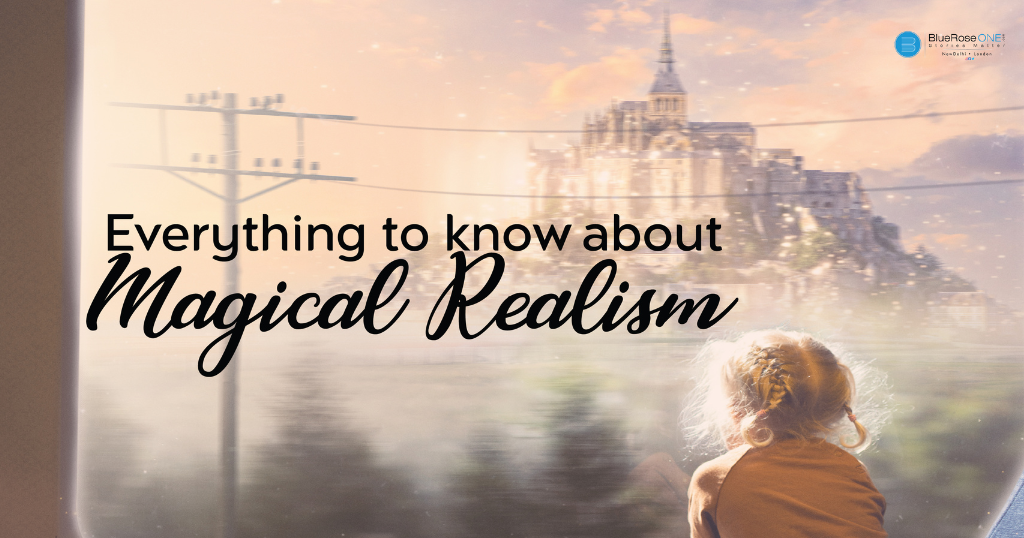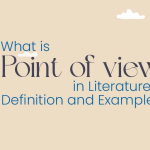Magical realism, a literary genre that defies conventional boundaries and introduces enchanting elements into the fabric of reality, has left an indelible mark on the world of literature. Originating in Latin America, this captivating genre has transcended cultural borders, influencing writers globally. In this in-depth exploration, we will traverse the landscapes of magical realism, dissect its defining features, trace its historical roots, examine its prominent literary figures, and ponder its enduring impact on the literary world.
Defining Magical Realism:
Magical realism, at its core, is a narrative style that seamlessly integrates magical or fantastical elements into a realistic setting, creating a world where the extraordinary becomes a natural part of everyday life. Unlike traditional fantasy genres that transport readers to alternate realms, magical realism invites them to explore the magical within the mundane. The genre blurs the lines between reality and fantasy, challenging readers to question their perceptions of the world.
You may also like: How to Write an Author Bio | BlueRoseOne.com
Characteristics of Magical Realism:
- Everyday Enchantment: Magical realism transforms the mundane into the extraordinary by seamlessly integrating magical occurrences into the everyday lives of characters. This blurring of the lines between the ordinary and the supernatural creates a narrative landscape where the fantastic is treated matter-of-factly. This technique invites readers to view the world through a different lens, where enchantment is woven into the fabric of daily existence. In Gabriel Garcia Marquez’s “One Hundred Years of Solitude,” the character Remedios the Beauty ascends to the sky while folding laundry, a fantastical event presented with the same nonchalant tone as any other daily chore. By grounding magical elements in the routine of the characters, Marquez establishes a world where the extraordinary is as commonplace as the sunrise.
- Ambiguous Boundaries: A hallmark of magical realism is the deliberate ambiguity surrounding the boundaries between reality and fantasy. This intentional blurring challenges readers to question their perceptions and embrace a narrative that defies strict categorization. The ambiguity serves as an invitation to explore the story with a sense of wonder and an openness to multiple interpretations. Take Haruki Murakami’s “Kafka on the Shore,” where characters slip seamlessly between dreamlike sequences and the tangible world. The narrative leaves the reader in a constant state of uncertainty, questioning whether events are truly magical or merely a product of the characters’ perceptions. This deliberate ambiguity adds layers of complexity, inviting readers to engage actively with the narrative.
- Cultural Embeddedness: Magical realism often draws inspiration from cultural contexts, infusing narratives with elements from folklore, mythology, and indigenous beliefs. This cultural embeddedness not only adds authenticity to the story but also allows authors to explore and celebrate the unique aspects of different cultures. Isabel Allende’s “The House of the Spirits” is steeped in Latin American cultural traditions, incorporating spirits, mystical powers, and familial connections that are deeply rooted in the region’s folklore. The infusion of cultural elements enhances the narrative, making it a rich tapestry that reflects the diversity and depth of a specific cultural milieu.
- Character-Centric Exploration: In magical realist literature, characters are typically everyday individuals thrust into extraordinary situations. Their reactions to magical occurrences often mirror the reactions one might have to commonplace events, contributing to the genre’s unique blend of the ordinary and the extraordinary. Salman Rushdie’s “Midnight’s Children” features Saleem Sinai, born at the exact moment of India’s independence, who discovers he possesses supernatural abilities. Despite these powers, Saleem grapples with the same existential questions and personal challenges as any ordinary person, highlighting the genre’s emphasis on the human experience.
- Narrative Fluidity: Magical realism embraces a fluid narrative style, seamlessly transitioning between the real and the magical. This narrative flexibility allows authors to present fantastical elements without disrupting the overall flow of the story. In Laura Esquivel’s “Like Water for Chocolate,” the magical realist elements, such as Tita’s ability to infuse her emotions into the food she cooks, are seamlessly woven into the narrative. The story unfolds with a rhythmic fluidity, blurring the boundaries between the magical and the everyday and creating a cohesive reading experience. In conclusion, the essence of magical realism lies in its ability to transform the ordinary into the extraordinary, challenging readers to explore the ambiguous boundaries between reality and fantasy. Cultural richness, character-centric exploration, and narrative fluidity further enhance the genre’s enchanting allure, creating a literary landscape where the magical and the mundane coexist harmoniously.
You may also like: The Importance of Professional Editing in Self-Publishing
Historical Roots:
Latin American Genesis:
Magical realism finds its literary roots in Latin America, particularly in the works of writers such as Gabriel Garcia Marquez, Isabel Allende, and Jorge Luis Borges. The genre gained prominence in the mid-20th century, with Marquez’s “One Hundred Years of Solitude” often considered a seminal work in magical realist literature.
Beyond Latin America:
While Latin America served as the cradle of magical realism, the genre has transcended geographical boundaries. Authors from various cultural backgrounds, including Salman Rushdie, Haruki Murakami, and Toni Morrison, have embraced and adapted magical realism, infusing it with their unique perspectives.
You may also like: Audible Titles vs Physical Books: Which One is Best for you?
Prominent Figures in Magical Realism:
-
Gabriel Garcia Marquez:
-
Widely regarded as the father of magical realism, Marquez’s works, particularly “One Hundred Years of Solitude” and “Love in the Time of Cholera,” are quintessential examples of the genre. His lush prose and intricate storytelling have set the standard for magical realist literature.
-
-
Isabel Allende:
-
Allende, a Chilean-American author, has made significant contributions to magical realism with works like “The House of the Spirits.” Her storytelling skills and incorporation of magical elements into family sagas have solidified her place in the pantheon of magical realist writers.
-
-
Haruki Murakami:
-
Hailing from Japan, Murakami is known for blending the ordinary with the surreal in his novels. Works such as “Kafka on the Shore” and “1Q84” showcase his mastery of magical realism, infusing contemporary settings with dreamlike and otherworldly elements.
-
You may also like: Find the Benefits of Reading Books Online: Beyond the Pages
Impact on Literature:
Expanding Narrative Horizons:
Magical realism has expanded the narrative possibilities for writers, providing a unique lens through which to explore complex themes and societal issues. By seamlessly blending reality with fantasy, authors can craft allegorical tales that resonate on multiple levels.
Cultural Exploration:
The genre’s emphasis on cultural context allows writers to delve into the intricacies of folklore, mythology, and local traditions. This not only enriches the storytelling but also fosters a deeper understanding of different cultures among readers.
Challenging Reality:
Magical realism serves as a powerful tool for challenging conventional notions of reality. By introducing fantastical elements into familiar settings, writers provoke readers to question the boundaries between the possible and the impossible, encouraging a more nuanced understanding of the world.
Global Adaptation:
The universal appeal of magical realism has led to its adoption by writers from diverse cultural backgrounds. The genre’s adaptability allows it to be seamlessly woven into narratives that reflect the unique perspectives and experiences of authors from around the world.
In conclusion, magical realism stands as a genre that invites readers to embark on a journey where the fantastical and the real coexist harmoniously. Rooted in the cultural richness of Latin America, magical realism has evolved into a global phenomenon, leaving an indelible mark on the literary landscape.
Read: Everything to know about “Pragati Maidan, New Delhi World Book Fair (10th – 18th February) 2024”
Through its enchanting narratives and thought-provoking themes, magical realism continues to challenge and expand our understanding of the world, beckoning readers to explore the wondrous realms that lie at the intersection of reality and magic. As we navigate the pages of magical realist literature, we discover not only captivating stories but also a profound reflection of the complexities and wonders of the human experience.
















